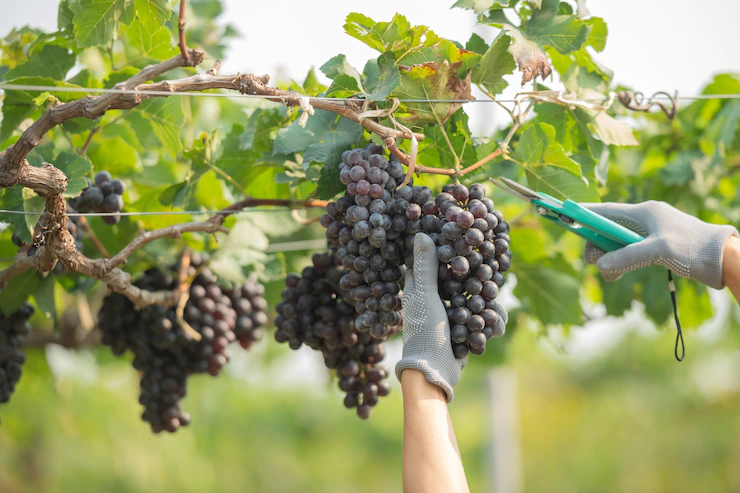When growing grapes in South Africa, there are several infections and diseases that grape growers should watch out for. These can have a significant impact on the health and productivity of grapevines. Here are some common infections and diseases to be aware of:
- Downy Mildew (Plasmopara viticola): Downy mildew is a fungal disease that affects the leaves and berries of grapevines. It thrives in cool, humid conditions and can cause significant damage if not properly controlled. Infected leaves develop yellow or brown patches, and infected berries may become covered with a fuzzy, grayish growth.
- Powdery Mildew (Erysiphe necator): Powdery mildew is another fungal disease that affects grapevines. It appears as a white powdery coating on the leaves, shoots, and berries. It can reduce grape quality and yield if left untreated. Powdery mildew thrives in warm, dry conditions, which are common in certain regions of South Africa.
- Botrytis bunch rot (Botrytis cinerea): Botrytis bunch rot is a fungal disease that affects grape clusters, especially when conditions are damp and cool. It causes gray mold on berries, which can lead to the rotting of the entire cluster. This disease is of particular concern in areas with high humidity or frequent rainfall.
- Esca (Phaeomoniella chlamydospora): Esca is a complex disease that affects grapevines worldwide. It is caused by various fungal pathogens and can lead to significant yield loss and vine decline. Symptoms include leaf discoloration, wood necrosis, and dieback of shoots. Proper management and prevention strategies are crucial to minimize its impact.
- Leafroll viruses: Leafroll viruses are a group of viruses that can cause leaf discoloration, reduced vigor, and delayed grape ripening. These viruses are primarily transmitted through infected planting material and by certain insect vectors, such as mealybugs. Implementing virus-free planting material and managing insect populations are essential for control.
- Pierce’s disease (Xylella fastidiosa): Pierce’s disease is a bacterial infection that can cause severe damage to grapevines. It is transmitted by xylem-feeding insects, such as sharpshooters. Symptoms include leaf scorch, wilting, and eventual death of the vine. Proper insect control and monitoring are critical for preventing the spread of this disease.
To mitigate the risks of these infections and diseases, grape growers should implement good cultural practices such as proper irrigation management, adequate canopy management, and regular monitoring for signs of disease. Additionally, integrated pest management strategies, including the use of fungicides, insecticides, and resistant grape varieties, can help control these issues effectively. It is essential to consult with local agricultural authorities, extension services, or grape-growing experts in South Africa for specific recommendations tailored to your region and vineyard conditions.
Join 'Farmers Mag' WhatsApp Channel
Get the latest Farming news and tips delivered straight to your WhatsApp
CLICK HERE TO JOIN






